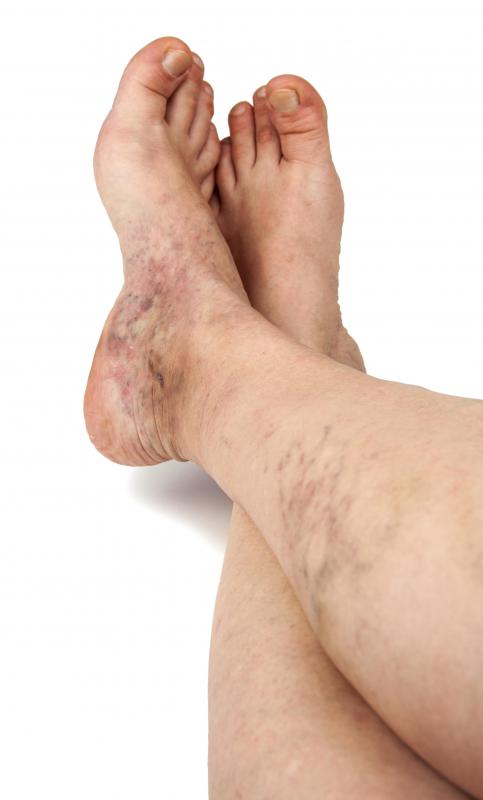At WiseGEEK, we're committed to delivering accurate, trustworthy information. Our expert-authored content is rigorously fact-checked and sourced from credible authorities. Discover how we uphold the highest standards in providing you with reliable knowledge.
What is Telangiectasis?
Telangiectasis refers to the minute dilated blood vessels that appear just below the skin’s surface. The abnormal vessels appear in various formations and sizes and may be seen anywhere in the body though usually confined to the skin. Dermatology experts suggest these pronounced capillaries may be either acquired or congenital in nature, and though generally harmless, the anomalies may accompany serious medical conditions.
Comprised of arterioles or venules, the unusual capillaries typically form below the skin’s surface, appearing on any part of the body. Arteriole formations appear red while those consisting of venules are blue. The formation may contain a few fine irregular lines or be made up of of a complex, interwoven arrangement of tiny vessels. Measuring 1 millimeter in diameter or less, telangiectases are often seen on the nose and cheeks. When seen on the legs, especially on the thighs, these tiny clusters of blood vessels may be referred to as spider veins, though a true spider vein configuration typically contains a definite circular pattern, radiating from the center outward.

Generally, these dilated vessels begin to appear after the age of 18, for a variety of reasons. Women are more likely to acquire telangiectases than men due to the association of the phenomenon with pregnancy. Hormones associated with pregnancy often weaken vessel walls along with the additional volume of blood, making the tiny vessels more visible through the skin. Various external factors contribute to this type of blood vessel formation as well, including extensive exposure to the sun or to a cold environment, skin trauma and certain skin conditions.

Acne rosacea and port wine stains are other common examples of these vascular subcutaneous growths, and while these developments may be unsightly, they are relatively harmless. Telangiectases may resemble benign vascular neoplasms; however, the former are typically flat and have no other tissue involvement. Many serious medical conditions may give rise to telangiectases, including liver disease and venous hypertension. The pressure within engorged veins often leads to weakened vessel walls, valvular failure and telangiectasis formation.

Additionally, a genetic disorder known as hereditary hemorrhagic telangiectasis or Osler-Weber-Rendu disease produces these dilated blood vessels in the skin, mucosa and various organs. Dermal growths associated with this disorder often appear as red or purple spots, but these vascular anomalies may reach many centimeters in size. Wherever located, these fragile vessels have a tendency to rupture and easily bleed. Vascular malformations accompanied by chronic nosebleeds or gastrointestinal bleeding may lead to anemia, while a telangiectasis located in the brain or lungs could lead to death.
AS FEATURED ON:
AS FEATURED ON:














Discuss this Article
Post your comments